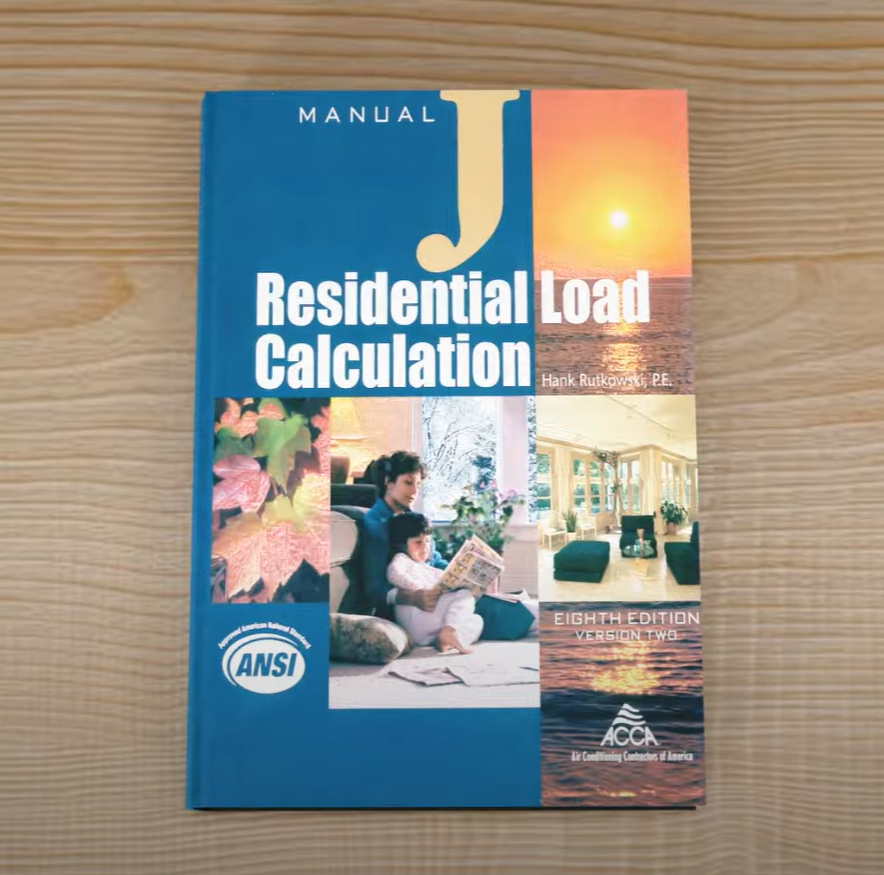Get Tech Tips
Subscribe to free tech tips.
Start Capacitor & Inrush, Facts & Myths – Part #4

Now is the part where we get specific about start capacitors and inrush. If you haven't read the first three parts, please do so before reading this one, or it may not make sense. (You can find Part #1, Part #2, and Part #3 at these links.)
I'm going to come out and say it so that you keep reading.
What you were taught about hard start kits decreasing inrush amperage is wrong.
Look at the oscilloscope image above. It's a 3-ton reciprocation compressor with equalized pressures and 230V applied. Now, keep in mind that the voltage value shown here is RMS, and the amperage is PEAK. So, if the amps seem high in these charts, that is why.
So, this compressor starts up at locked rotor (on the run winding, remember), and it gets up to speed at around 180 milliseconds of run time. That is pretty typical of a good, equalized compressor under normal conditions.
Sometimes compressors do struggle to start, and this can be due to:
- Low input voltage (usually due to voltage drop)
- Starting unequalized due to short cycling and or non-bleed (Hard Shut Off) expansion valves
- Long line lengths
- Refrigerant migration into the crankcase
- Compressor wear

Here, we show a system with low voltage applied (187v), and it HAS a hard start in place (not necessarily the same compressor as the last, so don't try to compare apples to apples).
In this case, the compressor doesn't get up to speed until about 550 milliseconds, and at that point, both the run and start winding amperage drops.
This proves that the hard start kit is working in that case.
You can tell this because the only amperage that can enter the start winding is dictated by the run and start capacitors. As we said before, the capacity of a capacitor is dictated completely by the capacitance (mfd) and the voltage across it.
For the amperage of the start winding to go UP at 580 milliseconds, it can only be due to an increase in back EMF as that motor gets up to speed. Then, at 600 milliseconds, the potential relay removes the start capacitor, and the amperage drops down to the run capacitor-only level.
Conclusion #1
Fixing a voltage drop issue does more good than adding a hard start kit.
A valuable test measures the voltage feeding your compressor with it under load and rectifying poor line voltage connections or undersized conductors.

Look at these two identical compressors: one with a hard start kit and one without.
Techs are often taught that measuring inrush on the compressor common wire is a way to show how a hard start kit decreases startup amps.
However, that isn't what we measure when we see a big difference in inrush amps.
What we are measuring is how QUICKLY the compressor starts, not the true inrush amps at start. I've looked at the specs on several high-end ammeters that measure inrush, and they read at 100 milliseconds.
If you look at the two examples above, the compressor with a hard start will read lower at 100 milliseconds because it is already almost at full speed, and the LRA has nearly passed.
LRA (locked rotor amps) is essentially the amperage the compressor runs when the run winding functions as a heater rather than a motor. The quicker the motor starts turning, the quicker it gets out of the LRA range.
Now, consider the start winding. Take a look at the start winding with no hard start. It stays the same even though the compressor is essentially locked all the way up to 600 milliseconds. So, even though the compressor is locked, the current through the start winding is limited to what the run capacitor can hold and release.
With the hard start in place, the start winding amperage peaks right up until the potential relay takes it out at 100 milliseconds.
The problem is that we use tools that measure at 100 milliseconds, when that may be before or after the motor has hit that 80% speed.
Conclusion #2
Locked rotor amps are what they are. That's why the manufacturer can publish that spec on the data tag. It's the amperage that the motor will draw when it's locked at the rated voltage.
When we measure inrush with a meter, we are really just taking a snapshot at a particular point in time that may or may not line up with what the manufacturer published, depending on how close the motor to full speed at that time.
Conclusion #3
Hard start kits don't decrease starting amps at the moment of start; they can't.
What they can do is reduce the time it takes to get the motor started. So, in a time-averaged sense, a hard start kit very well may reduce amperage and wattage.
That is why a hard start is often specified for long-line applications and non-bleed TXVs. It's also why techs have found that adding a hard start can reduce light-dimming complaints by speeding up the amount of time the compressor remains at LRA.
Conclusion #4
Hard start kits do increase the current on the start winding. In fact, that's essentially all they do differently than a run capacitor. They both provide a phase-shifted current to the start winding; a start capacitor just does MORE of it.
The argument that hard start kits reduce wear and stress on the start winding is false. With no hard start, the load on the start winding is constant and very low. Adding in a hard start adds more current at start and the possibility of potential relay sticking that can definitely cause start winding stress.
This isn't to say start kits are a problem when sized properly. They can and do reduce LRA on the run winding by adding more phase-shifted current to start.
Conclusion #5
Start capacitor sizing and potential relay voltage ratings are really important and should be selected to do the job of starting the compressor quickly without staying in too long or providing more start winding current than needed.
—Bryan










Comments
Thank you for the 3 parts. I learned about things I didn’t know existed, and came up with new clarity (ar at least different points of confusion) about hard-start kits.
Thank you for the 3 parts. I learned about things I didn’t know existed, and came up with new clarity (ar at least different points of confusion) about hard-start kits.
Spot on with this write-up, I absolutely believe that this amazing site needs a lot more attention. I’ll probably be back again to see more, thanks for the information!
Spot on with this write-up, I absolutely believe that this amazing site needs a lot more attention. I’ll probably be back again to see more, thanks for the information!
cialis generique [url=https://tadalmed.com/#]Acheter Cialis[/url] Cialis sans ordonnance 24h tadalmed.com
cialis generique [url=https://tadalmed.com/#]Acheter Cialis[/url] Cialis sans ordonnance 24h tadalmed.com
Kamagra Commander maintenant kamagra livraison 24h or acheter kamagra site fiable
http://urlxray.com/display.php?url=https://kamagraprix.com/ kamagra oral jelly
[url=https://cse.google.lu/url?sa=t&url=https://kamagraprix.com]acheter kamagra site fiable[/url] kamagra livraison 24h and [url=https://www.521zixuan.com/space-uid-1291725.html]Kamagra Commander maintenant[/url] Kamagra Oral Jelly pas cher
Kamagra Commander maintenant kamagra livraison 24h or acheter kamagra site fiable
http://urlxray.com/display.php?url=https://kamagraprix.com/ kamagra oral jelly
[url=https://cse.google.lu/url?sa=t&url=https://kamagraprix.com]acheter kamagra site fiable[/url] kamagra livraison 24h and [url=https://www.521zixuan.com/space-uid-1291725.html]Kamagra Commander maintenant[/url] Kamagra Oral Jelly pas cher
cialis prix Tadalafil achat en ligne or Tadalafil 20 mg prix sans ordonnance
http://hellenicradio.org.za/?URL=https://tadalmed.com Achat Cialis en ligne fiable
[url=https://beporsam.ir/go/?url=http://tadalmed.com]Acheter Cialis[/url] cialis prix and [url=http://www.yya28.com/home.php?mod=space&uid=1445435]Tadalafil 20 mg prix sans ordonnance[/url] Tadalafil achat en ligne
cialis prix Tadalafil achat en ligne or Tadalafil 20 mg prix sans ordonnance
http://hellenicradio.org.za/?URL=https://tadalmed.com Achat Cialis en ligne fiable
[url=https://beporsam.ir/go/?url=http://tadalmed.com]Acheter Cialis[/url] cialis prix and [url=http://www.yya28.com/home.php?mod=space&uid=1445435]Tadalafil 20 mg prix sans ordonnance[/url] Tadalafil achat en ligne
pharmacie en ligne avec ordonnance: Medicaments en ligne livres en 24h – pharmacie en ligne sans ordonnance pharmafst.com
pharmacie en ligne avec ordonnance: Medicaments en ligne livres en 24h – pharmacie en ligne sans ordonnance pharmafst.com
kamagra pas cher: kamagra pas cher – Kamagra Commander maintenant
kamagra pas cher: kamagra pas cher – Kamagra Commander maintenant
kamagra gel Achetez vos kamagra medicaments or Achetez vos kamagra medicaments
http://images.google.sc/url?q=http://kamagraprix.shop Kamagra Commander maintenant
[url=https://toolbarqueries.google.co.nz/url?q=http://kamagraprix.shop]acheter kamagra site fiable[/url] Achetez vos kamagra medicaments and [url=http://jiangzhongyou.net/space-uid-594273.html]achat kamagra[/url] kamagra livraison 24h
kamagra gel Achetez vos kamagra medicaments or Achetez vos kamagra medicaments
http://images.google.sc/url?q=http://kamagraprix.shop Kamagra Commander maintenant
[url=https://toolbarqueries.google.co.nz/url?q=http://kamagraprix.shop]acheter kamagra site fiable[/url] Achetez vos kamagra medicaments and [url=http://jiangzhongyou.net/space-uid-594273.html]achat kamagra[/url] kamagra livraison 24h
Acheter Cialis: cialis generique – Cialis sans ordonnance 24h tadalmed.shop
Acheter Cialis: cialis generique – Cialis sans ordonnance 24h tadalmed.shop
olympe casino cresus: olympe – olympe casino en ligne
olympe casino cresus: olympe – olympe casino en ligne
To leave a comment, you need to log in.
Log In